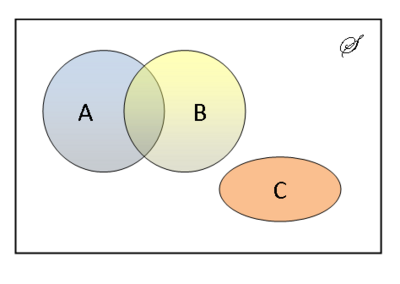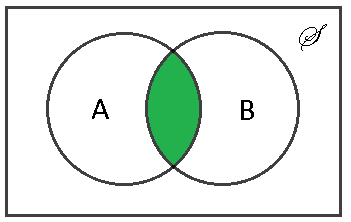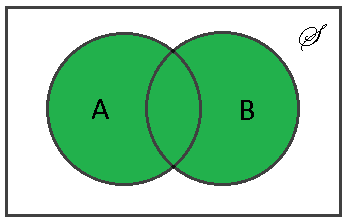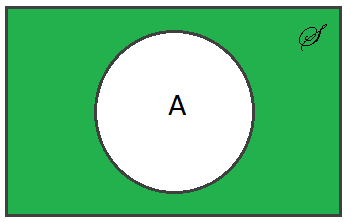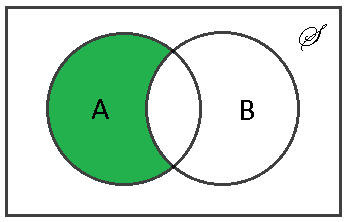Random Variables and Signals
Subtopic 1: Set Theory Review
Definitions and Notation
Definition $ \qquad $ A set is a collection of objects called elements, numbers or points.
Notation $ \qquad $ $ \omega $∈$ A $ means $ \omega $ is an element of the set $ A $. $ \omega $∉$ A $ means $ \omega $ is not in the set $ A $.
There are two common ways to specify a set:
- Explicitly list all elements, e.g. $ \{1,2,3,4,5,6\} $
- Specify a rule for membership, e.g. $ A=\{\omega $∈$ Z:1 $ ≤ $ \omega $ ≤ $ 6\} $, i.e. the set of all integers between 1 and 6 inclusive. I prefer this notation for large or infinite sets.
Note that there is always a set that contains every possible element of interest. This set, along with some structure imposed upon the set, is called a space, denoted
Definition $ \qquad $ Let $ A $ and $ B $ be two sets. Then,
The proof that the second statement is equivalent is trivial and follows from the definition of the term subset, which is presented shortly.
If $ A $ and $ B $ are not equal, we write
Definition $ \qquad $ If $ \omega $∈$ A $ ⇒ $ \omega $∈$ B $, then $ A $ is said to be a subset of $ B $. if If $ B $ contains atleast one element that is not in $ A $, then $ A $ is a proper subset of $ B $. We will simply call $ A $ a subset of $ B $ in either case, and write $ A $⊂$ B $.
Definition $ \qquad $ the set with not elements is called the empty set, or null set and is denoted Ø or {}.
Venn Diagrams
A Venn diagram is a graphical representation of sets. It can be useful to gain insight into a problem, but cannot be used as a proof.
Set Operations
Definition $ \qquad $ The intersection of sets $ A $ and is defined as
Definition $ \qquad $ The union of sets $ A $ and is defined as
Definition $ \qquad $ The complement of a set $ A $, denoted $ A^c $, Ā, or A' is defined as
Definition $ \qquad $ The set difference $ A-B $ or A\B is defined as
Note that
Definition $ \qquad $ Sets $ A $ and $ B $ are disjoint if $ A $ and $ B $ have not elements in common ie
In figure 1, A and C are disjoint. B and C are also disjoint.
Algebra of Sets
References
- M. Comer. ECE 600. Class Lecture. Random Variables and Signals. Faculty of Electrical Engineering, Purdue University. Fall 2013.

